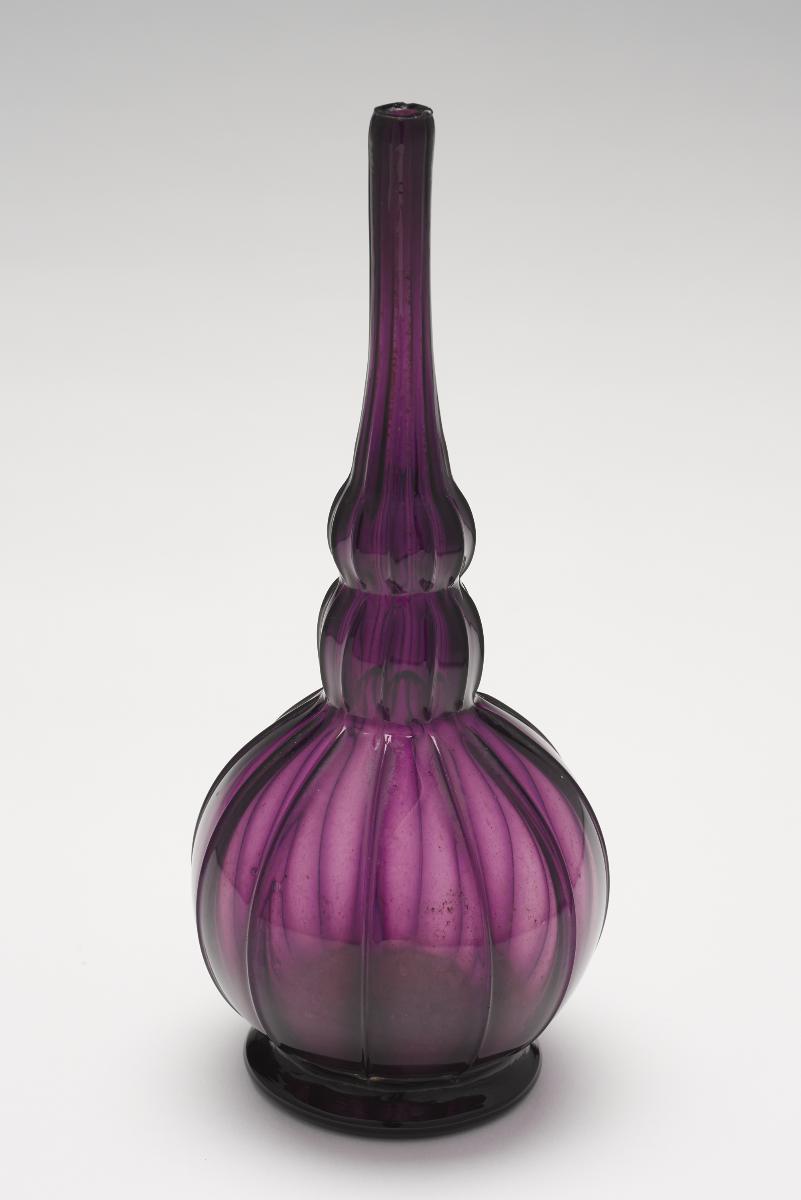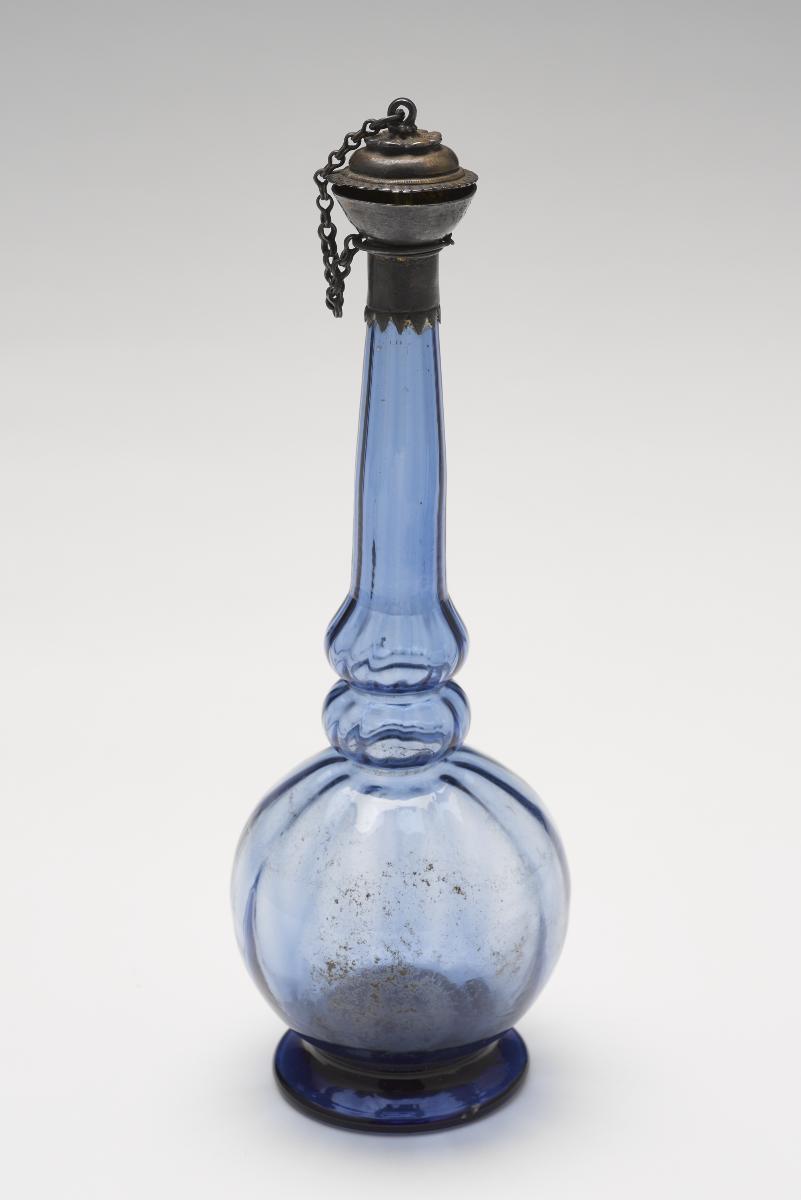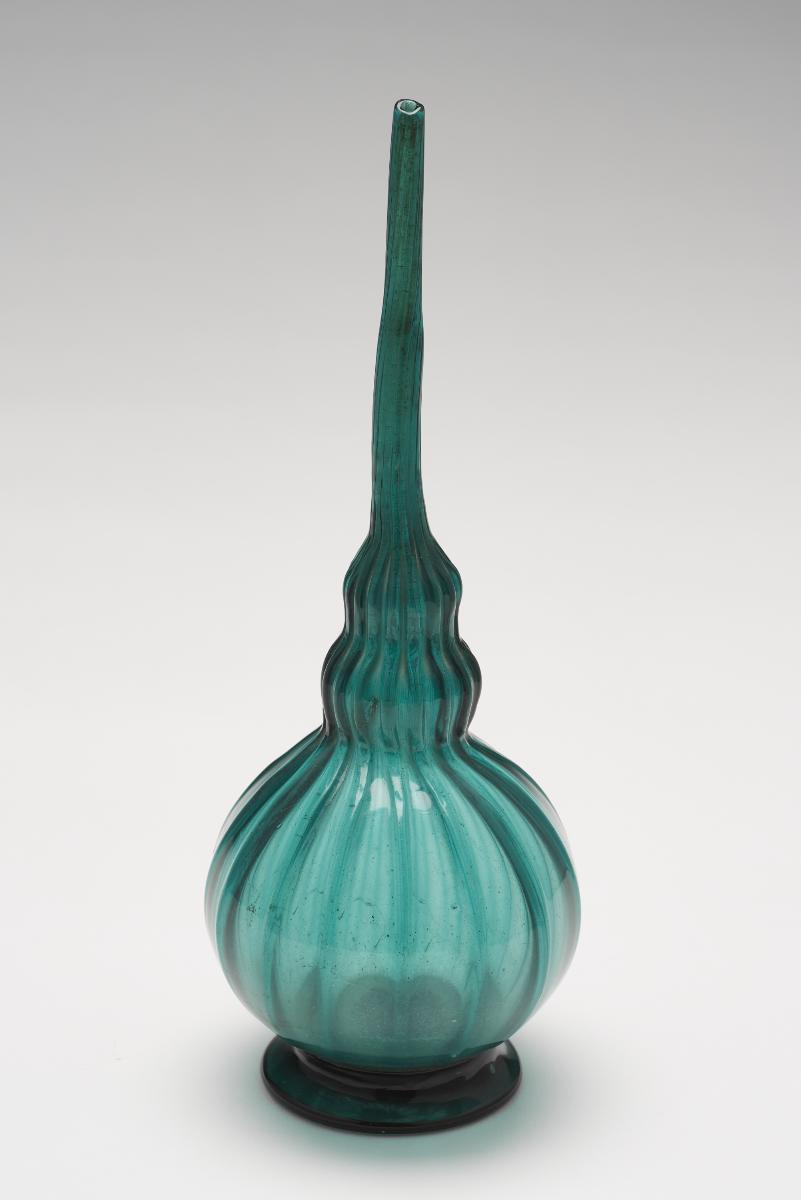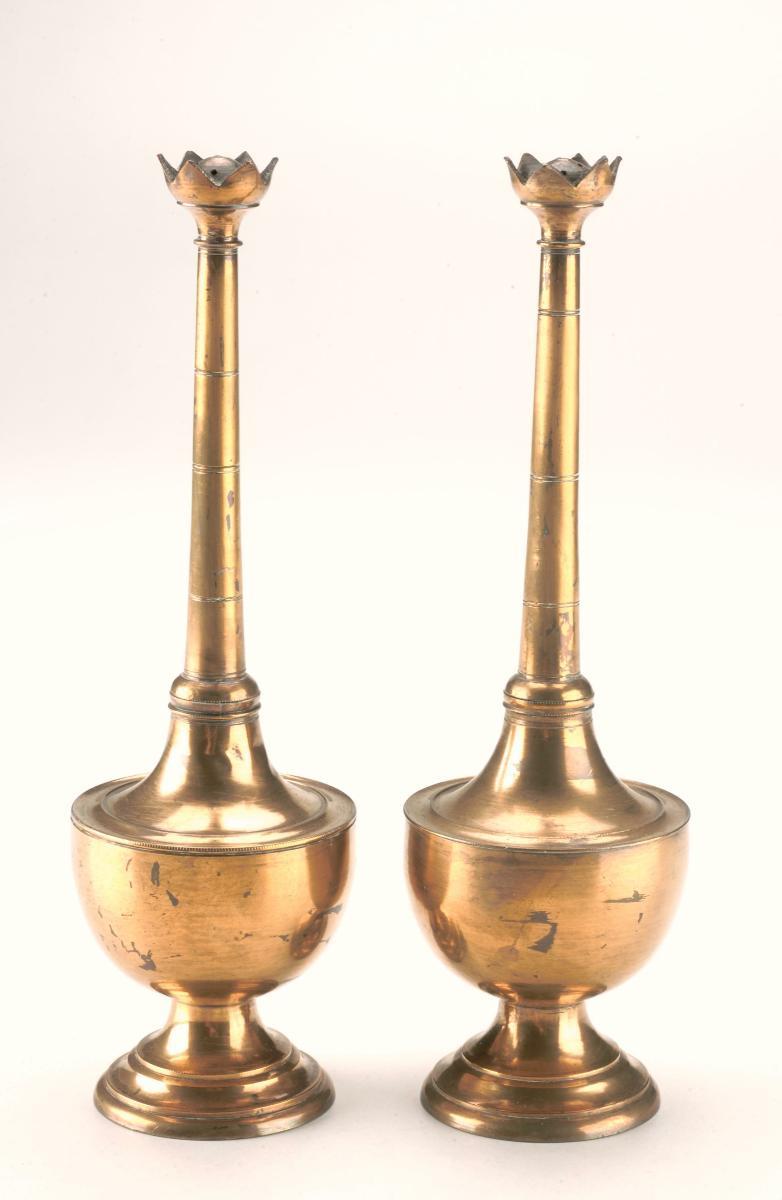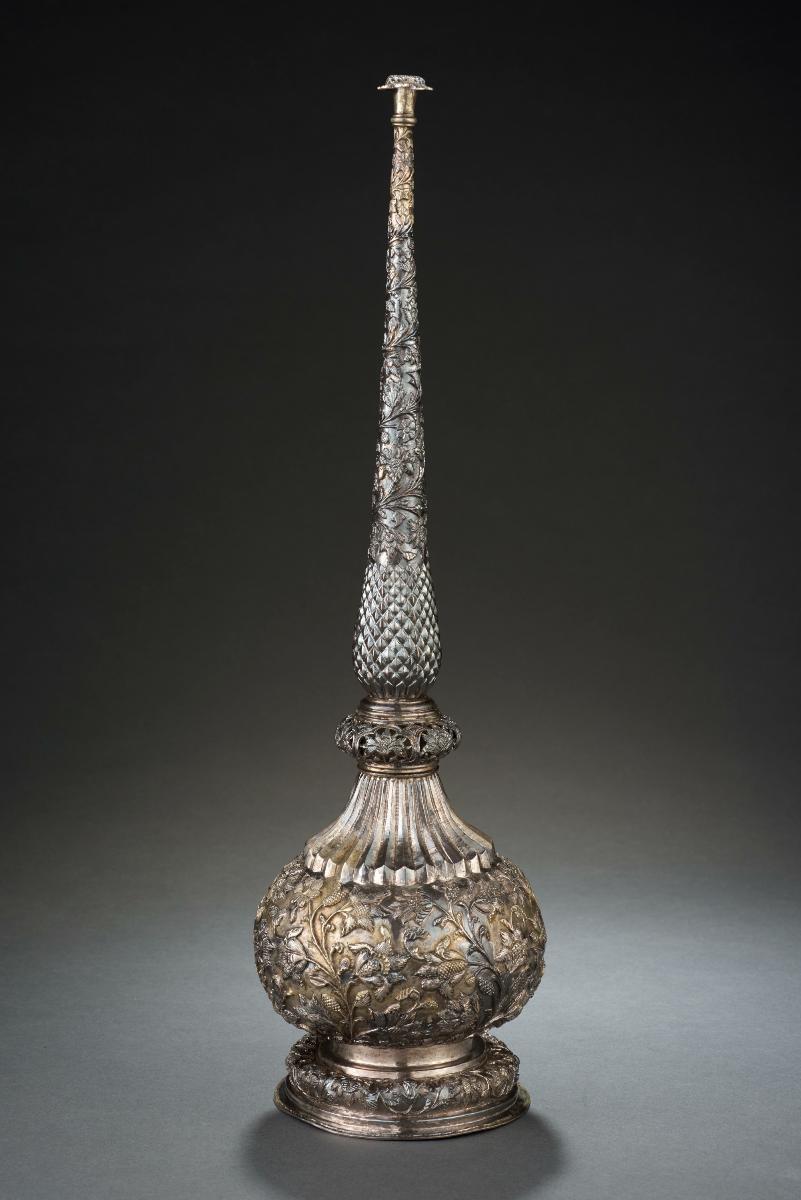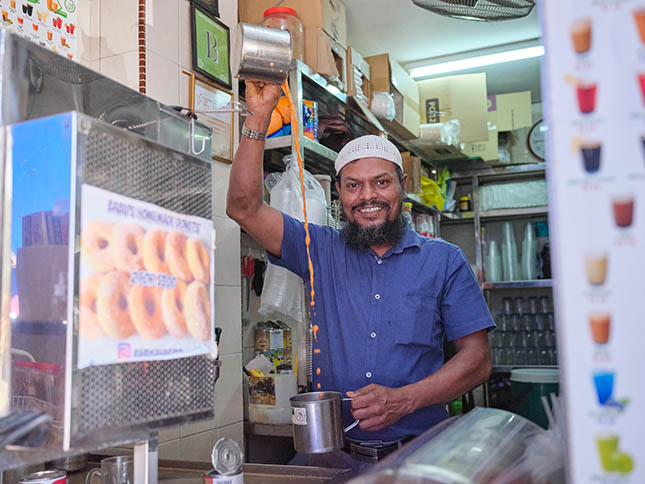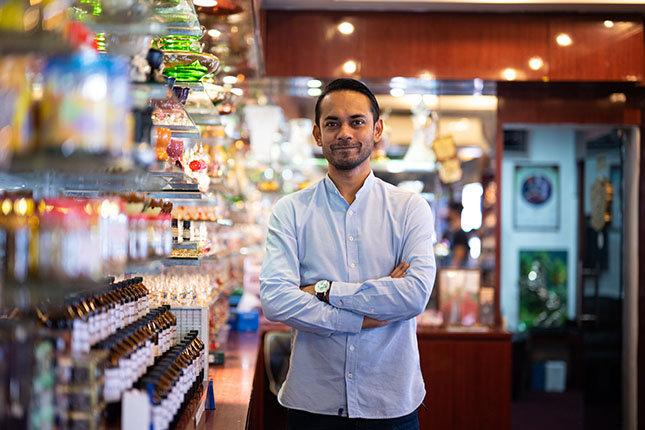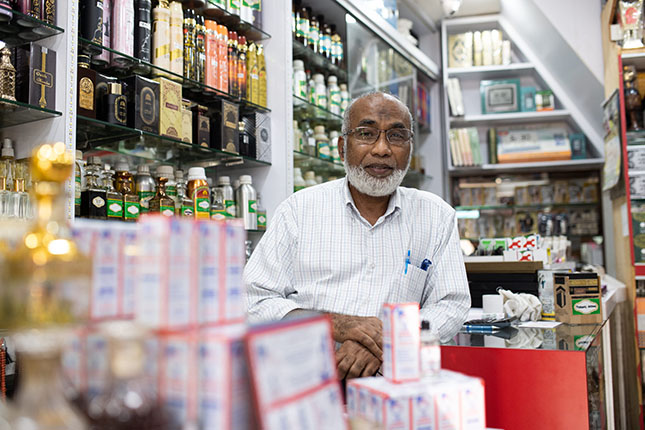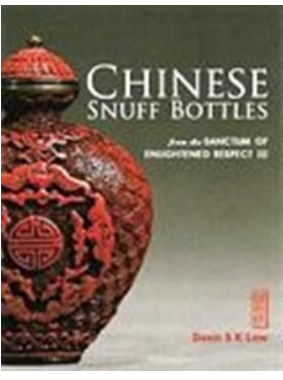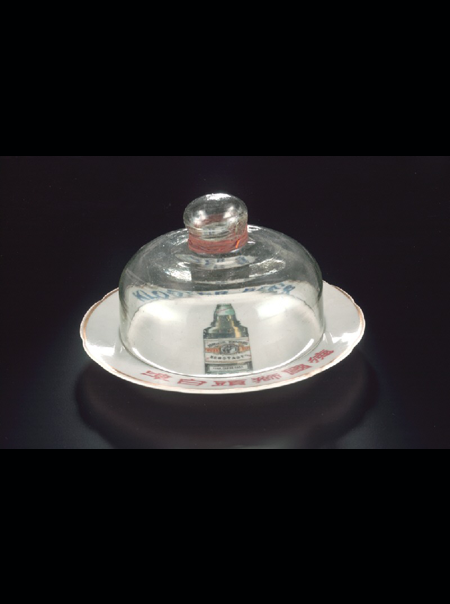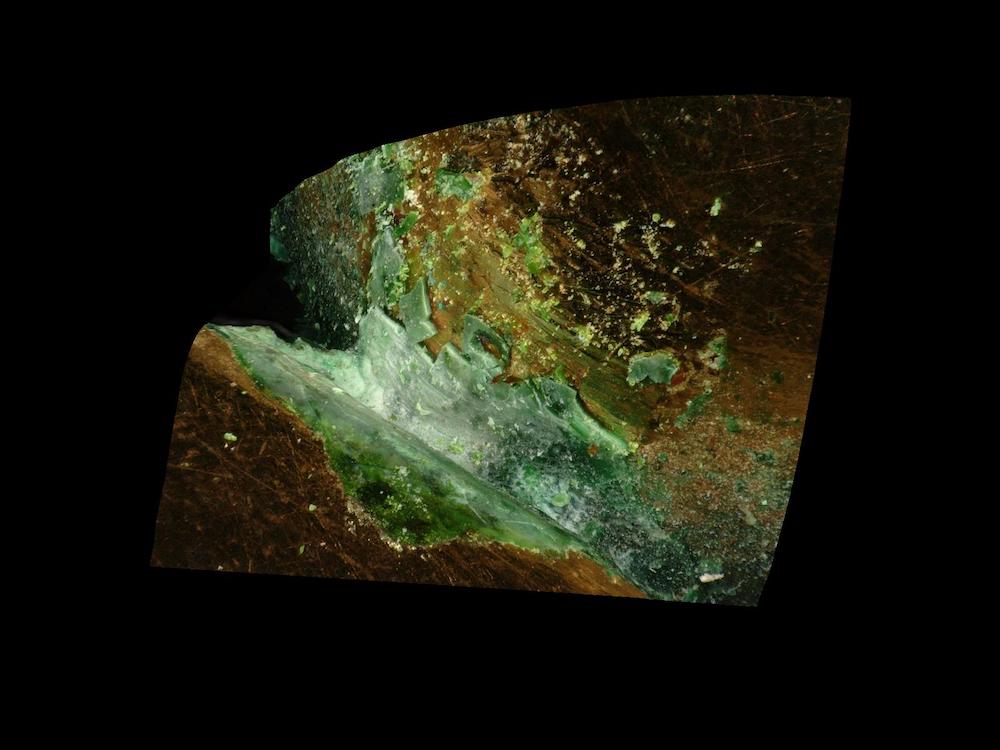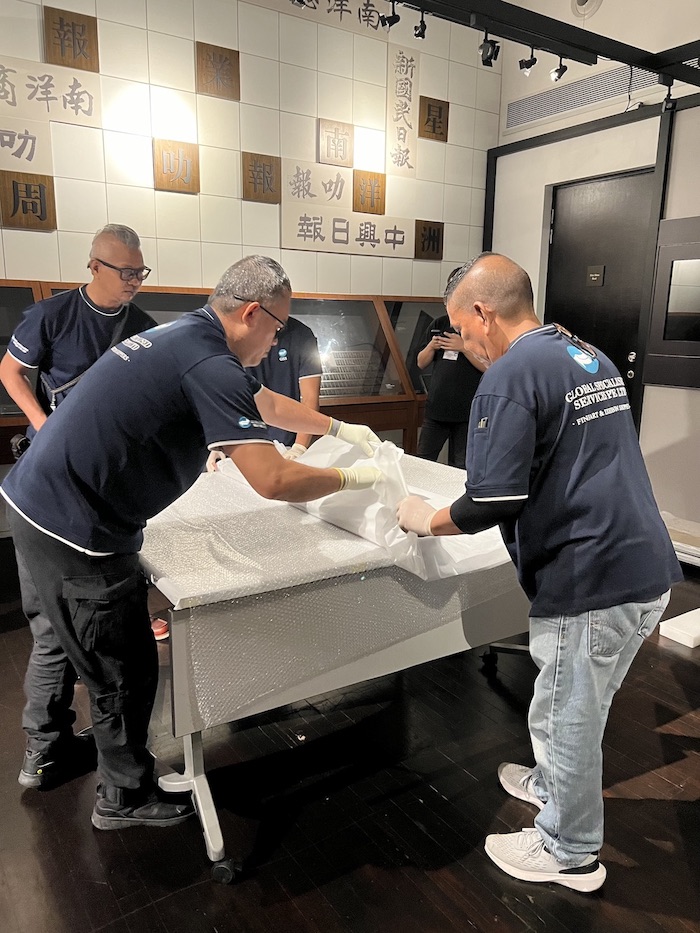Object size: 18.0 x 7.5 x 7.5 cm
This is a blown glass flask with an elegant, tapering neck that is ribbed nearer the base. Monochrome rosewater or perfume sprinklers were among the more typical glass wares produced by workshops of Kapadwanj, near Ahmedabad, from the 17th through early 19th century. Violet glass, such as this sprinkler, were less common than flasks of various blue or green hues. Flask forms were modelled after earlier metalwork examples from the Timurid or Mughal period. Flasks like this were used to sprinkle cooling rosewater on guests as a mark of hospitality, a tradition that probably originated from Iran but was readily adopted by Hindu and Muslim courts in India. The use of sprinklers became widespread and one special use was for wedding ceremonies - a practice that is shared among many cultures in Iran, South and even Southeast Asia.




